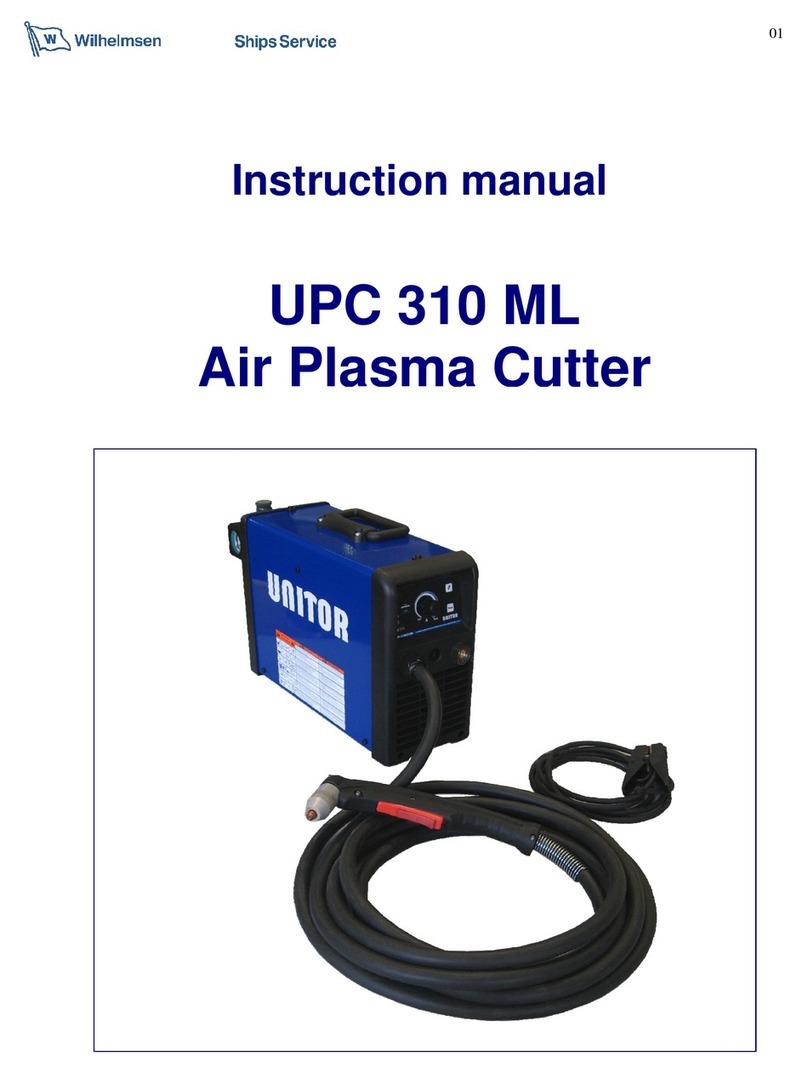
06
-Boost power board (PCB5) for
NTC 3 and 4.
- The sensor under the secondary
inverter board for NTC 5.
During cutting, the Circuit Breaker trip.
Make sure the cutting current
does not require input power
greater than what supplied by
the line or the fuse is too low.
Check the fuse size.
230V 1Ph: 25A
400V 3Ph: 16A
440V 3Ph: 16A
No compressed air output.
Solenoid valve damaged.
Front panel logic board
PCB10 faulty.
-When you push test air, check
the supply voltage of EV
(PICTURE 15).
If the voltage is present and no air
output the Solenoid valve must be
replace.
-If above checks are all correct.
The logic board PCB10 is faulty
and to be replace.
Always compressed air out when I turn on
the machine
Front panel logic board
PCB10 faulty.
-If above checks are all correct.
The logic board PCB10 is faulty
and to be replace.
Maximum output current always 60A
Phase failure.
The generator is working in
single phase.
Check the input of the 3 phases.
The arc does not transfer to the workpiece Ground clamp problem
-Clean the area where the ground
clamp contacts the workpiece to
ensure a good metal-to-metal
contact.
-Inspect the ground clamp for
damage and rapair it if necessary.
-Move the torch closer the
workpiece and fire the torch again.
Error message
TRI message
Indicates that machine has
been turned on while pressing
torch switch.
Release the trigger and restart the
power supply.
Error message
PIP message
Indicates that the
consumables are not correctly
mounted.
Check the correct assembly of
consumables (PICTURE 20).





























